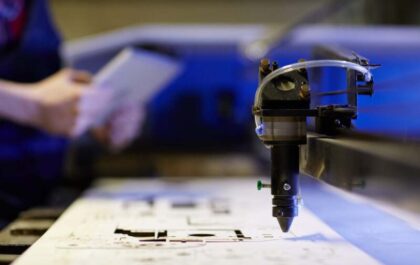Table of Contents
Introduction
Humans always go extinct before reaching the stage of simulated perception or being able to create a similar simulation.
The roots of this idea go back a long time, as many philosophers have long believed in the idea that we live in a simulation, including Plato in one of his dialogues, known as Plato’s Cave or the legend of Plato and the Chinese philosopher Guangxi in the butterfly dream. Elon Musk, the founder of SpaceX, said at a press conference in 2016 that the probability of us living in real life is one in a million.
Since the dawn of humanity, humans have raised constant questions about existence. Who are we? Where did we come from? Are we alone in this world? Is there a great power that controls our destiny? Hypotheses varied to examine the answers to these questions.
And one of these answers is a hypothesis that the reality we live in now is not absolute. And we are in a computer-made simulation. Just as if we were objects in a video game!
If humans could create a simulation like the one in which they lived. They would be unlikely to be interested in mimicking their ancestors’ past or a civilization similar to theirs.
We Live in Computer Simulations!
One of the implications of Bostrom’s paper is that scientists are divided in answering these questions and analyzing the probability of the validity of this hypothesis. A new analysis shows that the possibility of living beings in objective reality is almost equal to the likelihood that we are virtual.
In addition, being able to create simulations within them of “conscious” beings will make the probability that we are virtual and live in someone’s computer more likely. Still, the mystery lies in the concept of “consciousness” itself and can the consciousness and perception that humans possess be similarly simulated?
Simulation Hypothesis Analysis
Colombian scientist David Kipping found that the best way to analyze a simulation hypothesis was to explore it from a mathematical. Scientific perspective. For this, he used Baez’s theorem. One of the methods of statistical reasoning that uses Bayes’ theory attributed to the former English mathematician Thomas Baez.
Baez’s theorem allows the probability of something to happen to be calculated as a “post-probability” by hypotheses for the possibility of it happening “the preconceived probability,” that is, the probability of an event occurring based on previous circumstances that may be relevant to the event.
Kipping began by analyzing the three scenarios Bostrom put forward in the simulation hypothesis and quickly excluded the first and second scenarios because they led to the absence of stimulation. Then the result shows two ideas. With no third indicating that the first means that we “live in virtual reality” versus a biological hypothesis that suggests that we “live in real reality”. Each idea gets half the possibilities as if you were betting on one side of the coin!
When using the previous probabilities with Bayesian analysis. We conclude that the last chance (the reality we are living in now) is equal to the ratio of the subsequent probability to “virtual reality”, with a slight tendency to favour the first possibility.
Do we live in a simulation? Is it true that the hypothesis that says that the reality we live in now is not absolute and we are in a computer-made simulation?
What is the Probability Ratio of the Simulation Hypothesis
All of the above information and possibilities will change if humans can create a simulation of virtual reality with “conscious” beings inside it because this event will increase the likelihood that humans themselves live within virtual reality!
According to Kipping’s analysis, according to current evidence, Elon Musk is wrong that the probability of us being, in reality, is one in a million.
It is also worth noting that Kipping adopted the principle of apathy in his analysis of the simulation hypothesis. A guide based on the distribution of probabilities evenly over existing ideas when they do not have any information or data that favours one of them. Still, Bostrom himself objects to this principle, especially concerning the biological hypothesis.
The chances of these hypotheses occurring may seem equal. Especially with no evidence, this situation will change if there is some evidence of a simulation. But if we assume that we live in virtual reality, can we detect flaws in this simulation?
Quantum Mechanics for Simulation Analysis
We know that our observation or measurement in quantum mechanics creates the particle and determines its state. It is also a fundamental principle in quantum mechanics called the principle of the collapse of the wave function.
And physicists are divided in explaining whether this collapse is accurate or only reflects a change in our understanding of the system. Everything is decided by looking at it. The rest is just a simulation.
Just as if you were playing a video game! It is how the mathematician Ohadi pointed out. Asserting that the presence of pure simulation will inevitably lead to the absence of a collapse. Therefore, quantum mechanics will reject this.
To arrive at an explanation and a result, Ohadi and his colleagues analyzed five critical ideas for the double-slit experiment. The Naughty Young investigation – each designed to show simulation errors- asserts that despite his experiments. It is impossible at this stage to assess the success of these experiments.
Helium Atom Nucleus Simulation
University of Maryland physicist Zahra Daoudi involves other scientists in the debate over the simulation hypothesis and has suggested that a simulation could be detected if it has limited computational powers.
Zahra works in nuclear force research. Especially in the field of solid interactions, including the exchange of quarks with each other to form protons and neutrons that are difficult to analyze due to their complexity.
To understand these interactions. Scientists are forced to perform numerical simulations. Still, they do not assume the existence of supernatural civilizations with unlimited power but rather shortcuts to making the simulation computationally applicable. Usually by isolating spacetime and considering it constant. For example, the best result they got was when simulating the nucleus of a single atom of helium consisting of two protons and two neutrons.
Ultimately, we may be authentic. Non-virtual reality despite the Matrix film promoting this idea in 1999 and Elon Musk’s vague statements or quantum physics.
Related posts
Featured Posts
Exploring Advanced Techniques in the Laser Engraving Machine: 3D, Texturing, and Multi-Layered Designs
Many industries have spoken for the laser engraving machine because of its results and versatility. But recently, many advancements have…
Benefits of Vitamin D
Introduction One cannot live without the benefits of vitamin D because its virtues are essential for good health. But do…


